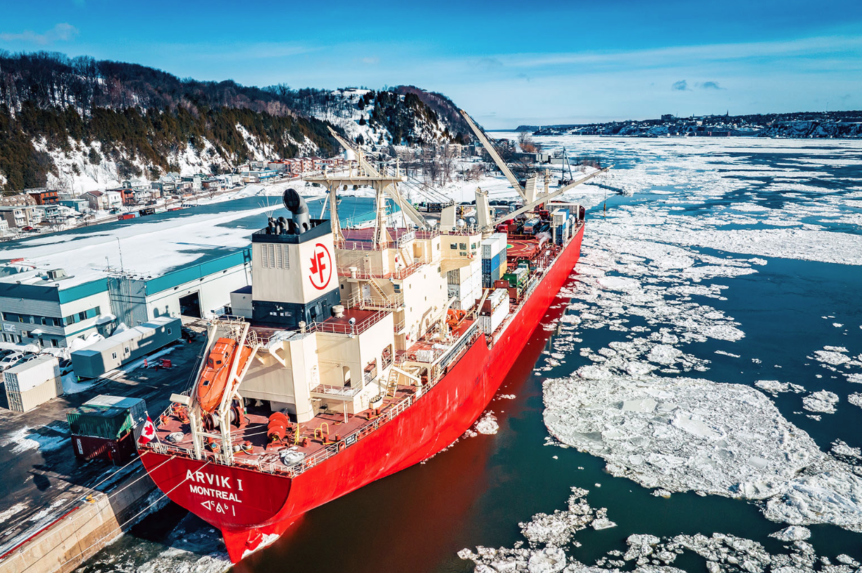How to Create an Energy Emergency
Debunking Crude Oil Tariff Myths
Canadian and U.S. oil production are complementary. Canada produces primarily heavy crude, while the U.S. specializes in lighter shale-based oil. This difference is why about 70% of U.S. refineries are configured specifically to process heavy crudes like Canada’s Western Canadian Select (WCS).
Geographic proximity and established pipelines make Canadian oil not just economically competitive but essential to maintaining U.S. refining efficiency and energy security.
Canadian Crude Powers U.S. Energy Security from Coast to Coast


Myth: “We can just use our own oil.”

Reality:
- U.S. oil consumption (19.7 million barrels per day) far exceeds domestic production (12.1 million barrels per day), requiring imports to meet demand.
- The U.S. produces mostly light oil, which is not suitable for many U.S. refineries currently designed for heavy crudes. Retrofitting those refineries would cost US$1–3 billion per facility. Building 10–20 new refineries instead (250K–500K bpd each) would cost US$5–15 billion per site and take 5–7 years.
- Even if more U.S. oil was available, pipeline infrastructure isn’t. Building a 1,400-mile pipeline from the Gulf of Mexico to Midwest refineries would cost ~$8.5 billion USD and face years of regulatory delays.

Myth: “It will be easy to replace Canadian oil.”

Reality:
- Canada supplies over 60% of U.S. crude oil imports. Replacing the Canadian supply would require developing 55+ new large-scale oil fields, each costing over $5 billion USD and needing 5‒10 years to become operational.
- Transitioning to U.S. light oil would reduce refining efficiency and yield fewer key products like diesel, asphalt, lubricants, and petrochemicals.
- Economically, WCS typically trades at a discount to West Texas Intermediate (WTI), making Canadian oil more affordable and profitable to refine.

Myth: “We can source oil from elsewhere.”

Reality:
- Venezuela and Russia produce similar heavy crude but are under U.S. sanctions, making short-term sourcing nearly impossible.
- Even if sanctions were lifted, shipping oil from those countries to inland U.S. refineries is far more expensive and logistically complex:
- Canada (via pipeline): $2–4 USD per barrel
- Venezuela: $17–25 USD per barrel
- Russia: $20–30 USD per barrel
- Deepening reliance on sanctioned or unstable regimes increases supply vulnerability and could raise reputational concerns around the easing of sanctions for economic convenience.
- Canada offers dependable, rules-based trade supported by long-standing infrastructure, in contrast to the politically volatile alternatives.
- Shifting away from Canada would undermine U.S. energy security and increase dependence on volatile regimes.
Immediately upon taking office, the new U.S. administration signed executive orders declaring a national energy emergency and promising energy abundance — yet imposing tariffs on Canadian crude risks the opposite.
Choosing tariffs over the competitive, integrated, and secure energy relationship with Canada could force the U.S. to spend over $240 billion USD on new refining capacity, raise fuel costs for households, and weaken North American energy security.
Sources
Analysis by the Canadian Chamber of Commerce’s Business Data Lab (BDL), based on trade data, industry benchmarks, and sector-level impact estimates to assess the potential effects of U.S. tariffs on supply chains, consumer costs, and cross-border production.
- Energy Information Administration
- U.S. Oil Imports by Country (2025)
- What’s the difference between heavy and light crude oils? And why do American refineries need both? (2025)
- Canada’s crude oil has an increasingly significant role in U.S. refineries (2024)
- Pipelines versus rail: What is the best way to transport oil? (2019)
- Tariffs On Canadian Oil Would Cost Billions Of Dollars (2025)
- Trump’s 25% Tariff Threat: New Analysis Reveals Severe Economic Fallout for Both Canada and the U.S. (2024)
- BP – Gulf of America (2025)
- BP – Capital markets Update (2025)
















